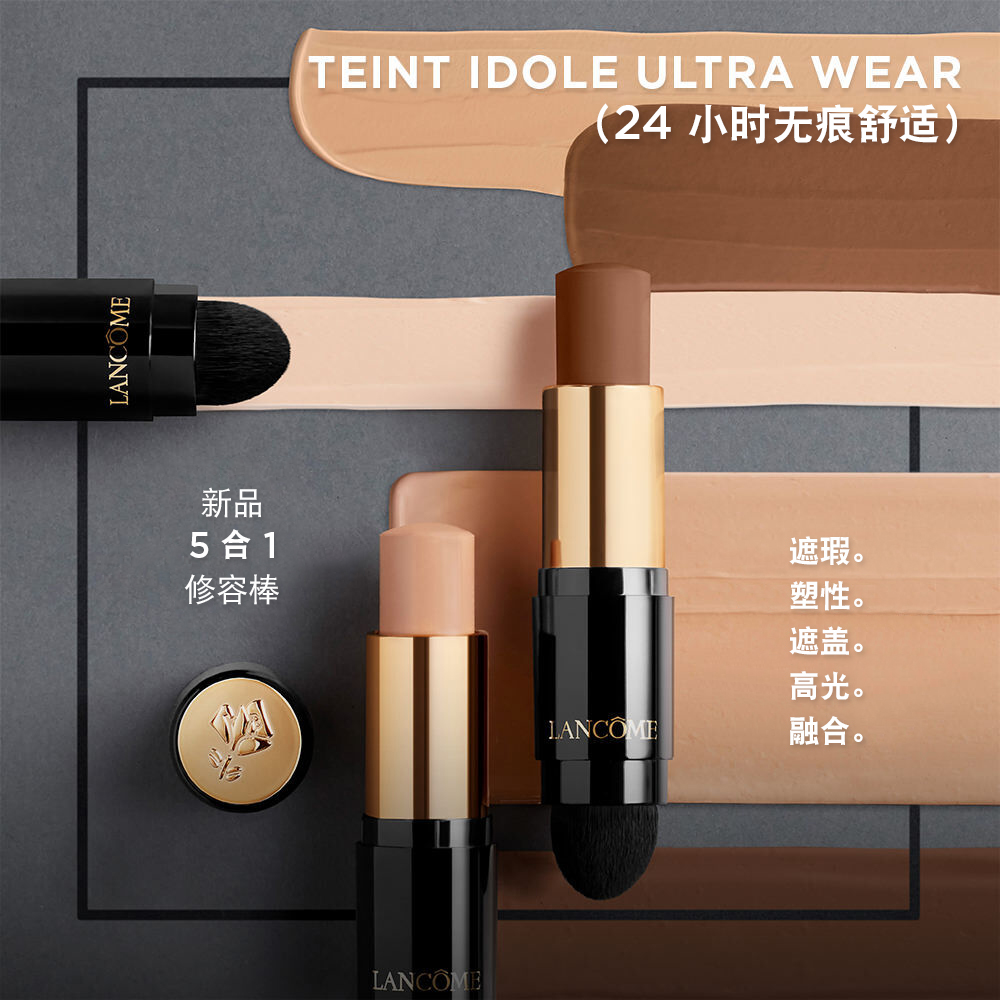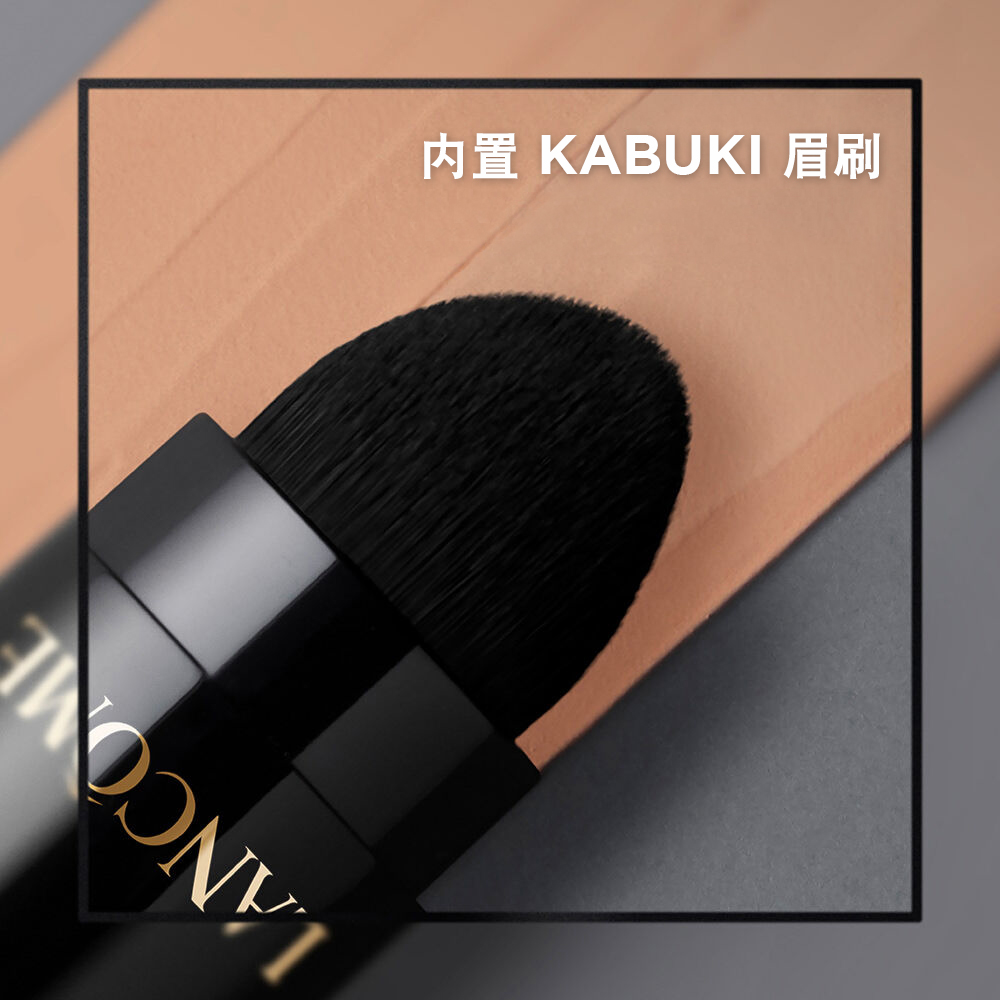古铜粉和轮廓就像表亲一样——它们在锅中看起来可能相似,并且紧密合作,但它们来自两个独特的肤色产品系列,其用途略有不同。接下来,我们通过邀请化妆师和Lancôme全国彩妆总监 Jasmine Ferreira 分享她对古铜粉与修容之间的区别以及如何使用每种产品的看法。
古铜色 vs 轮廓色:了解基础知识
古铜粉是一种化妆品,通常用于给皮肤带来阳光亲吻的温暖光泽。它通常应用于太阳自然撞击的面部区域,如前额,脸颊和鼻梁。古铜粉有多种形式,包括粉末、乳膏和液体,通常比您的天然肤色深一两个色号。
另一方面,轮廓是一种通过化妆来定义和增强面部结构的技术。它涉及将比肤色更深的冷色调产品应用于脸颊、下巴和鼻子两侧等部位。修容的目的是创造塑造和定义面部的阴影,使某些特征看起来更明显或更重塑。Contour 产品也可以有各种形式,如粉末、乳膏和棒。
古铜修容和修容之间的主要区别
古铜粉和修容产品既能增强面部,又能产生不同的效果,使用不同的技术进行涂抹。下面是一个细分:
对面部的影响
古铜色修容粉: 古铜粉通常具有米色、棕色或金色,采用哑光或光泽饰面,用于模仿天然棕褐色。正确涂抹后,古铜粉可以让肌肤看起来充满活力,更加光彩照人。
眼眶: 轮廓产品通常为冷色或中性色调,具有哑光饰面,以产生阴影并强调您的骨骼结构。效果更像是轮廓分明、精致的外观,以及下颌、颧骨和鼻子等雕刻特征。
应用技术的差异
古铜色修容粉: 古铜粉通常用蓬松的刷子涂抹,用轻手逐渐积聚颜色。目标是实现自然的温暖,因此混合对于避免粗糙的线条至关重要。
眼眶: 轮廓适用于您想沉入或更清晰地界定的区域,并要求使用成角度的涂抹器或轮廓棒,并与密集的刷子或化妆海绵混合,以稍微更精确地涂抹。混合对于确保阴影看起来自然而不干涸至关重要。
常见误解
轮廓复杂: 虽然修容看起来像是一种高级化妆技巧,但它不一定是复杂的。给自己时间完美放置和使用技巧,如使用轮廓棒和与化妆海绵混合,可以帮助您获得有效的效果。
更好: 使用古铜粉和轮廓,更轻的触摸通常可以获得更好的效果。涂抹薄薄的古铜粉和轮廓,逐渐增加强度。你不必做太多。过度涂抹会使面部看起来泥泞、斑驳或过于夸张,这通常不是日常化妆的目标。
谁应该使用 Bronzer?
古铜粉可以被任何想要为他们的肤色增加一点温暖和维度的人使用。特别适合打造阳光亲吻的光泽或强调晒黑。古铜粉适合所有肤色,关键是选择合适的色号,用轻手涂抹,以获得自然效果。无论您的肤色是白皙、中等还是深沉Lancôme为您提供一款适合您的古铜粉。
古铜粉应该比你更淡还是更深?
古铜色一般应比您的天然肤色深一两个色号。这有助于为你的脸创造自然的温暖和立体感,让人想起自然的棕褐色。关键是选择一款能改善肤色的古铜粉,而不会显得过于夸张。
如何使用古铜粉与如何修容
古铜粉和轮廓用于增强面部特征,但它们具有不同的目的,并应用于稍微不同的区域。无论是同时使用还是单独使用,古铜色和修容都能提升您的妆容。掌握这些技术的关键在于选择正确的产品和工具,最重要的是,仔细混合以创造你想要的外观。
如何涂抹古铜粉
古铜粉因为肤色增添温暖的阳光而备受喜爱。它通常应用于太阳自然撞击的面部区域,如前额、颧骨、鼻子和下巴。为了达到最佳效果,请选择一款古铜粉,比如我们的 Teint Idole Ultra Wear Skin Transforming Powder Bronzer,它比您的自然肤色深 1 或 2 种颜色,根据您的喜好,颜色可以是哑光或微微光泽。Lancôme 的全国彩妆总监 Jasmine Ferreira 建议您,“混合,将古铜粉与您的粉底和腮红无缝融合,以避免任何粗糙的线条。”使用蓬松的刷子进行涂抹,以确保产品均匀地分布和混合。
Teint Idole Ultra Wear Skin Transforming Powder Bronzer(Teint Idole Ultra Wear 极致修容古铜粉)
富含维生素,长效持妆达 24 小时
铜器应用技术
易于遵循的古铜粉涂抹技术,可在下次使用古铜粉时尝试。

试用和真正的古铜粉应用:首先,沿着脸部两侧以“3”形扫除古铜粉,从太阳穴开始,进入发际线,在颧骨下方移动,然后到下颌。还可以在鼻梁、下巴和前额上涂上轻度除尘,以增强自然晒黑效果。

提升妆容的修容膏应用:“L”技术就是创造一个提升的外观,随着你的放置而增加,而不是放弃特征。找到您的颧骨,将古铜粉稍微放在上面,然后混合。您可以使用手指导铜焊机的放置。放平双手,伸出拇指,形成“L”形。将左手掌放在脸部右侧(反之亦然),将食指放在发际线附近,拇指放在颧骨上——如果感觉有点尴尬,你可能做得对!刷子上的任何多余产品都可以沿着发际线和下颌线涂抹。

全温热铜器应用:如果您在涂抹粉底后仍然感到有点苍白,这项技术可以帮助温暖肤色。通体的古铜色妆效将有助于深化整体肤色。使用 1 到 2 种色号的深色粉饼搭配粉底。全身涂抹可放大和深化粉底色号。
如何修容
另一方面,修容侧重于定义和雕刻您的面部特征。这项技术使用比肤色深 2 到 3 种色调的哑光产品,从策略上雕刻出自然产生的阴影或您想创造深度错觉的阴影。您选择的轮廓颜色应根据您希望看到的对比度选择。使用密集的斜角刷子或美容海绵涂抹轮廓,确保精准。涂抹后,使用化妆刷、海绵或手指彻底混合(我们提到混合吗?)。这个想法是实现微妙的定义,没有可见的线条或鲜明的对比。
在哪里应用轮廓
要打造具有轮廓的塑形和轮廓,请将产品涂抹于阴影自然出现的特定区域或您想创造深度错觉的区域:
腮红: 从耳朵附近开始,在颧骨正下方的脸颊空心处涂抹轮廓色号,然后晕染到嘴巴。这放大了颧骨的结构,让您的脸更加妩媚。
前额: 围绕前额边缘,靠近发际线,勾勒轮廓。这有助于创造掉落的发际线和较短的前额的错觉,非常适合雕刻长或椭圆形的脸型。
Jawline: 沿下巴和下巴两侧涂抹轮廓,向下涂抹至颈部。这凸显了下巴线条,从面部到颈部形成更鲜明的对比,带来修身的错觉。您还可以从脸部周围向内稍微涂抹轮廓,以软化方形脸部形状的尖锐特征。
鼻: 沿着鼻子两侧的轮廓可以使其看起来更窄。鼻尖下方的一点轮廓也可以让你的鼻子看起来更短。
寺庙: 修整太阳穴会对面部产生变窄的效果,非常适合将眼睛向内朝向面部中心,雕刻圆形和心形脸型。
轮廓应用技术
尝试使用两种不同的产品格式来勾勒这些应用技术。

遮瑕膏轮廓:涂抹粉底后,选择一款遮瑕膏,如我们的 Teint Idole Ultra Wear All-Over Full Coverage Concealer,采用冷色或中性色底色,比您的彩妆底色深 2 到 3 种色号。将轮廓色号放置在您希望创造深度和阴影错觉的任何地方。使用遮瑕膏涂抹器的平侧,在颧骨下方、鼻子两侧、下巴周围和前额/额部周围单次踩下产品。因为这个公式是可构建的,你可以分层,直到颜色强度符合你的喜好。用指尖轻轻晕染或用浓密的斜角刷子精确塑形面部特征,与小圆周运动晕染,打造光滑妆容。
Teint Idole Ultra Wear All Over Full Coverage Concealer(无痕舒适粉底系列遮瑕液)
全面覆盖,自然哑光妆效
粉底棒修容:使用我们的乳霜至粉状 Teint Idole Ultra Wear Foundation Sticks 粉底棒有几种塑形方法。首先,选择比肤色深 2 到 3 种色调的冷色或中性色,以模仿阴影的自然外观。接下来,选择您想要申请的方式。
您可能喜欢尝试由名人化妆师 Mary Phillips 推广的底漆技术。运用这种涂抹技术,在涂抹粉底液之前,先将粉底棒涂抹在妆前乳的肌肤上。将粉底棒涂抹在您想要修容的部位。然后使用您通常的彩妆底妆。底漆技术有助于雕刻您的功能,同时最大限度地减少苛刻的线条和浪费的产品。这种技术因留下扩散、光滑的雕刻饰面而广为人知和喜爱。
由于采用独特的乳霜至粉饼配方,在涂抹粉底液、乳霜或粉饼后,您还可以使用我们的粉底棒涂抹轮廓。使用内置的 kabuki 刷或斜角刷,将轮廓色号涂抹在您想要塑形和混合的区域。修容时,切勿低估良好的混合效果!很好地混合有助于避免粗糙的线条,使用正确的工具和技术将帮助您实现这种自然的阴影效果。
Teint Idole Ultra Wear Foundation(无痕舒适粉底修容棒)
膏状质地转为粉质,可全面遮瑕
你能用古铜粉作为轮廓吗?
你可以使用古铜粉作为轮廓,但为了达到最佳效果,请考虑这一点。古铜粉通常具有温暖的底色,以增加光泽,当用于产生阴影(在色调上自然较冷)时,这可能看起来不自然。如果您选择使用古铜粉作为轮廓,请选择不太橙色或微光的古铜粉。
在修容和修容之间选择
如果你想增加温暖,让你的肤色看起来自然亲吻和发光,去一个古铜粉。如果你想更显著地定义你的面部特征,轮廓就是你的首选。您甚至可以使用古铜粉和轮廓共同打造您的妆容。请记住,这些是一般指南,而不是规则,你可以玩弄并发现什么最适合你的妆容和化妆风格。














